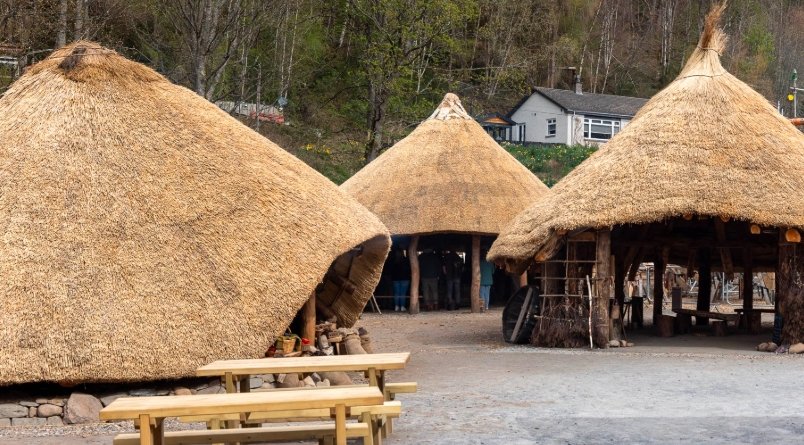A remarkably well-preserved piece of ancient fabric — believed to be the oldest of its kind in Scotland — is going on public display for the first time, offering a rare glimpse into the textile craftsmanship of Iron Age communities nearly 2,500 years ago.
Unearthed from the silty depths of Loch Tay during a 1979 excavation at the Oakbank Crannog site, the fragile textile had remained out of view for decades due to its delicate condition. But following years of conservation and scientific analysis, the artefact now takes pride of place at the Scottish Crannog Centre in Kenmore, Perthshire.
A Stitch in Time: Tracing Back to 480–390 BC
Radiocarbon dated to between 480 and 390 BC, the finely woven yarn represents a rare example of early Iron Age textile work in Scotland — and its survival is as much a marvel of nature as it is of history.
Pushed deep into the loch bed silt, the fabric was protected from the oxygen and bacteria that would normally degrade organic material over time. The unique preservation conditions allowed it to remain intact for over two millennia.
The textile has since undergone careful stabilisation and is now housed in a climate-controlled cabinet at the museum, which recently reopened on a new site after a devastating fire in 2021 destroyed the original reconstructed crannog.

Weaving Through the Past: A Technological Marvel
What makes this piece extraordinary is its structure. It is a 2/1 twill weave — a pattern that requires a more sophisticated loom and weaving technique than previously associated with the region and period. According to archaeologists, the textile even shows evidence of a hem, indicating an advanced understanding of garment construction.
Maureen Kerr, experimental archaeologist and long-time volunteer at the Scottish Crannog Centre, described the find as “highly unusual and deeply exciting.”
“The fine weave and possible hem are exceptional for the time. There’s nowhere else in Scotland with a textile of this size, type, and age. It tells us so much about the innovation and skill of Iron Age communities.”
A Material Legacy
Dr Susanna Harris, senior lecturer in archaeology at the University of Glasgow and specialist in ancient textiles, led the analytical study of the material.
“Wool was incredibly important to early Scottish societies — for warmth, trade, and identity. Even though it’s a small fragment, this piece gives us direct insight into prehistoric life. Its weave structure and preservation are genuinely unique.”
Dr Harris emphasised the value of such artefacts in shaping our understanding of the Scottish textile legacy — a tradition that stretches from crannogs to cashmere.
From the Depths of Loch Tay to the Public Eye
Crannogs — ancient lake dwellings built on stilts — were once scattered across Scottish lochs. These circular timber homes date back to the Neolithic period, with their use continuing well into the medieval era. The Oakbank Crannog, where the textile was discovered, remains one of the most thoroughly studied crannog sites in the country.
The Scottish Crannog Centre itself, a blend of archaeological research and living history, has been instrumental in bringing ancient Scottish life to the public. Its new site near Kenmore includes workshops, traditional building demonstrations, and soon, a fully reconstructed crannog made using ancient methods and sustainable materials.
A Piece of the Puzzle
The textile’s unveiling marks a significant milestone for the centre — and for Scotland’s broader archaeological community.
“This tiny fragment tells a mighty story,” said Kerr. “It challenges assumptions about Iron Age life and celebrates the ingenuity of Scotland’s earliest weavers.”
As the Scottish Crannog Centre looks to the future with ambitious reconstruction plans, this ancient piece of fabric stands as both a symbol of survival and a tangible connection to a time long gone — when loch-dwelling societies wove not only cloth but the very fabric of early Scottish identity.


















